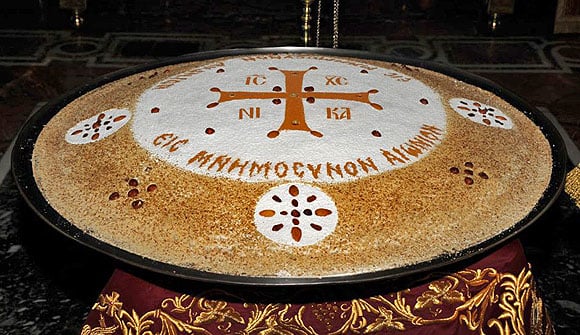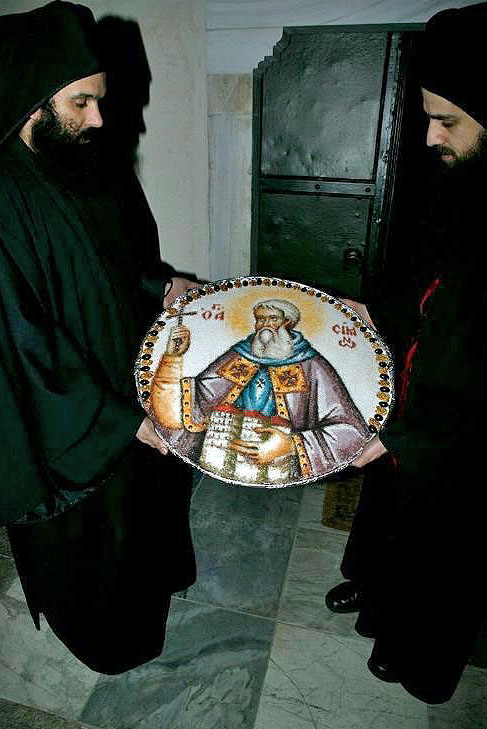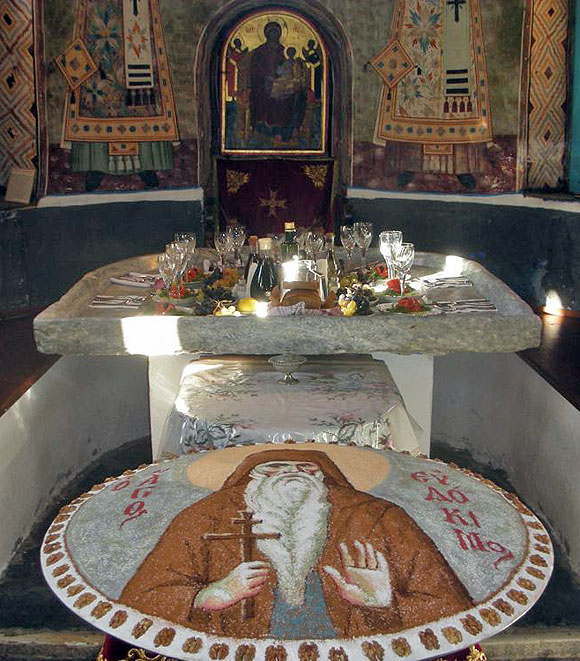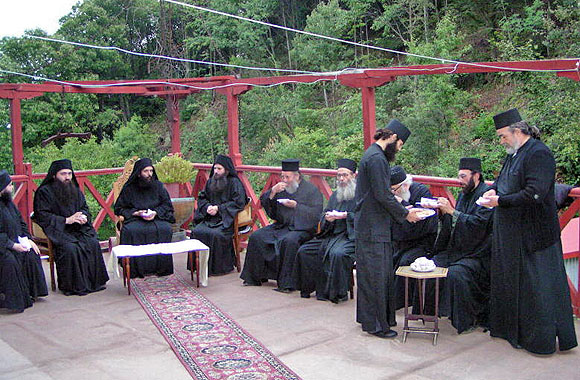 On the Holy Mountain, the abbots of the
last hundred years are commemorated, as well as the priests and monks of
the last thirty. Kollyvo is made every time an icon is placed in
the church for veneration. Every Saturday, however, the departed are
remembered unless it’s the return of a feast of the Lord. It’s a little,
zinc plate of boiled wheat which is placed under the icon of Christ.
On the Holy Mountain, the abbots of the
last hundred years are commemorated, as well as the priests and monks of
the last thirty. Kollyvo is made every time an icon is placed in
the church for veneration. Every Saturday, however, the departed are
remembered unless it’s the return of a feast of the Lord. It’s a little,
zinc plate of boiled wheat which is placed under the icon of Christ.
The kollyvo for a feast requires
real confectionary and iconographical skills. Normally, on the surface
there’s an icon of the founder or the saint who the honored in the main
church is named after, for example, Saint Athanasios the Athonite in the
Great Lavra or the Annunciation in the Monastery of Vatopaidi.
Ordinary kollyvo is made as
follows: they place crushed wheat into water to make it expand. Then
they put it into a container of cold water and bring it to the boil.
After half an hour, they pour off the water and add fresh, boiling it
again until the wheat is soft and the liquid opaque. A little salt is
added. They pour off the liquid, with the addition of sugar and
cinnamon. They wash the wheat in cold water to stop it sticking and
spread it out to dry. Two or three hours before the Divine Liturgy, the
monk whose obedience it is, takes a handful of fine breadcrumbs and adds
it to the kollyvo to soak up any moisture, so that it’s
completely dry. Afterwards he’ll sieve it to get rid of the breadcrumbs.
The wheat’s now ready. He spreads it out and sprinkles sugar on top
(not caster sugar, but ordinary) and makes a cross with sugar colored
with cinnamon. If he wishes, he can also add ground hazelnuts at an
earlier stage in the process.

The kollyvo for a feast has
ground walnuts added, as well as cloves and cumin. Some monasteries use
ground hazelnuts (carefully peeled of their skins) instead of walnuts
and cinnamon instead of cloves.

For the icons on the surface of the kollyvo, they take the wooden end of a fine artist’s brush and press the shape on the sugar from the anthivolo (a copy or template). In this way, they fill in the clothes, face and hair with different-colored sugars.

Ordinary kollyvo is the normal
sweet for monks in a coenobium and is distributed in the refectory at
the end of the meal. The Russians on the Holy Mountain make kollyvo
not with wheat, but with rice, as is the custom in Russia. Smyrnakis
noted that this was the case not only in the Monastery of Saint
Panteleïmon, but also in the Russian sketes and cells, as well.
Source-Pemptousia.com


